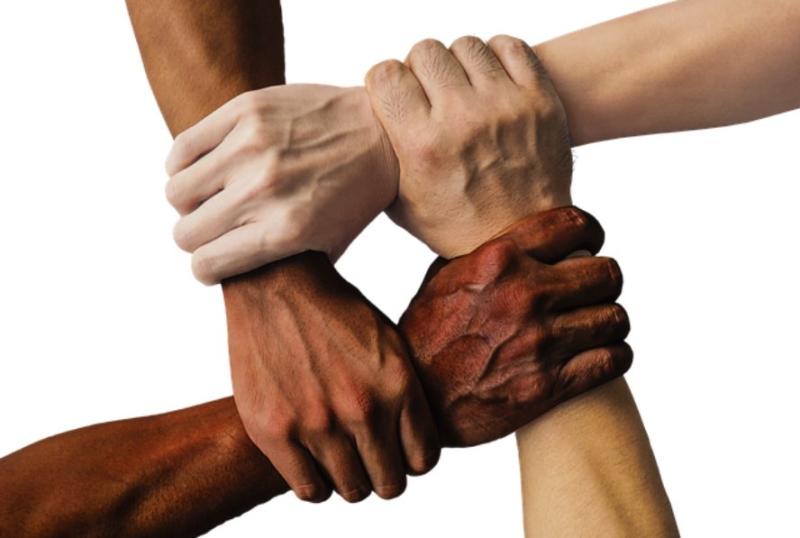Multiculturalism and assimilation are distinct methods for integrating diverse populations into a society. The primary difference between the two resides in their underlying ideologies and how they foster social cohesion. Multiculturalism is an approach that encourages individuals to preserve and celebrate their distinct cultural identities. It highlights the significance of diversity, mutual respect, and intercultural dialogue, promoting a society where multiple cultures coexist harmoniously. In a multicultural society, various ethnic, linguistic, and religious groups are encouraged to maintain their unique traditions, beliefs, and customs while also making contributions to the larger community. This strategy seeks to reduce prejudice, discrimination, and social tensions by fostering mutual tolerance and understanding between cultural groups.
Assimilation is the process by which minority groups acquire the dominant culture’s values, norms, and behaviours, thereby losing their cultural identities. This strategy emphasises the importance of conforming to a singular national culture in order to achieve social cohesion and unity. In an assimilationist society, minorities are expected to abandon their indigenous customs and practices in favour of the dominant cultural norms. Assimilation emphasises integration, frequently at the expense of cultural diversity. In conclusion, multiculturalism celebrates cultural diversity and promotes coexistence, whereas assimilation emphasises the incorporation of the dominant culture for social cohesion.
What is Multiculturalism?
Multiculturalism is a social and political philosophy that acknowledges, respects and embraces the fact that society has many different national, ethnic, and religious groups. It promotes the idea that different people add to the community as a whole, making it a place where people can be tolerant, understand, and accept each other. Multiculturalism encourages people to keep and celebrate their own cultural identities while also taking part in society as a whole. In a global society, different cultures are seen as a strength instead of a problem. The focus is on promoting openness, dialogue between cultures, and equal chances for everyone, regardless of cultural background. Multiculturalism encourages people to share their traditions, beliefs and practises, which can strengthen the dominant culture and help people come up with new ideas and points of view.
Policies and programmes of the government often support multiculturalism by encouraging the preservation of cultures, helping minority languages, and giving services tailored to the needs of different groups. These policies aim to decrease discrimination, racism, and social tensions while promoting fairness and social justice. In essence, multiculturalism is a way of thinking that celebrates the fact that different cultures can live together in one society. It does this by recognising that variety is valuable, and that each culture has something to offer the larger community. Its goal is to create an environment where everyone can succeed, regardless of their cultural background.
What is Assimilation?
Assimilation is a sociological process in which people or groups from minority cultures accept the dominant culture’s values, norms, and behaviours. This often means that they lose their original cultural identities. This process focuses on fitting in with the dominant culture to make society more cohesive and united. In an assimilationist society, people from minority groups are expected to give up their traditions, customs, and languages in favour of those of the dominant culture. The main goal is to help these groups fit in with the rest of society by helping them learn to live like everyone else. Assimilation can be a voluntary process driven by a desire for social acceptance and upward mobility. It can be forced by policies and practices that exclude or punish people who don’t fit in.
People often see assimilation as a way to get rid of cultural differences and strengthen a sense of national identity. On the other hand, critics say it can lead to a loss of cultural heritage, homogenisation of cultures, and the suppression of minority identities. In opposition to multiculturalism, which values different cultures and living together, assimilation focuses on adopting the dominant culture so everyone can get along. In short, assimilation is the process by which minority groups adopt the cultural traits of the dominant culture, often at the cost of their own cultural identities, to achieve social cohesion and unity.
Difference Between Multiculturalism and Assimilation
When dealing with cultural differences, multiculturalism and assimilation take opposite approaches. By welcoming and celebrating multiple cultural identities, multiculturalism promotes openness, understanding, and communication among people of different backgrounds. The process of assimilation, on the other hand, encourages members of cultural minorities to adopt the values, norms, and behaviours of the dominant culture. Unlike assimilation, which emphasises conformity and incorporation into a single national culture for social cohesiveness and unity, multiculturalism encourages coexistence and cultural exchange. This article compared and contrasted multiculturalism and assimilation and outlined their main differences.
Cultural Preservation vs Integration
In contrast to assimilation, which encourages minority groups to accept the dominant culture’s values, norms, and behaviours, multiculturalism advocates preserving and celebrating unique cultural identities.
Diversity vs Homogeneity
Assimilation strives to achieve cultural homogeneity and adherence to a single, dominating culture, while multiculturalism values cultural diversity and works to build an inclusive society.
Inclusiveness vs Conformity
When it comes to promoting social cohesiveness and togetherness, multiculturalism favours the coexistence of multiple cultures, while assimilation favours conformity to the dominant culture.
Intercultural Dialogue vs National Identity
While multiculturalism promotes understanding and acceptance between people of different backgrounds, assimilation seeks to create a common national identity by forcing people to conform to the dominant culture’s standards.
Government Policies
Multicultural policies aim to promote and protect cultural heritage, minority languages, and community-specific services. Assimilationist policies, conversely, may promote or even require conformity to the majority culture, leaving individuals who aren’t in the minority or subject to punishment.
Social Harmony
Assimilation seeks social harmony by assimilating minority groups into the majority culture, often at the sacrifice of their own cultural identities. In contrast, multiculturalism seeks social harmony via the celebration and cohabitation of many cultures.






